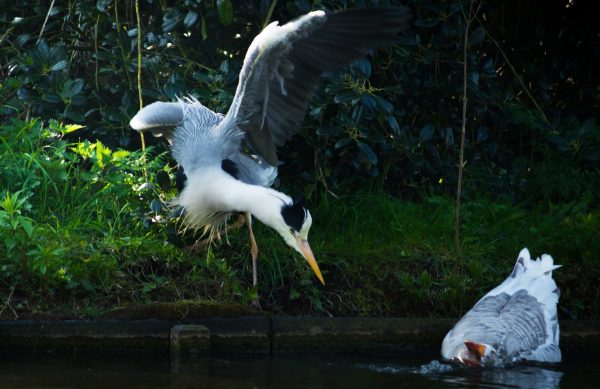WHAT WENT WRONG AT NEWSWEEK: At last, someone has written a big-picture look at how the once respected magazine had fallen into such disreputable journalism and business practices. It stands accused of shady ties to a religious institution and its staff is in disarray. Slate’s Will Oremus gives us the inside story of the magazine’s huge growth and its “spectacular downfall.”
Hackers see democracy as a weakness ripe for exploitation
Employees of the Russian-controlled Internet Research Agency are accused of fraud, deceit, identity theft,
breaches of currency laws, falsely claiming to be US citizens, running
covert intelligence operations, illegally controlling computer
infrastructure and masquerading as social activists for the purposes
of ...

What’s
powering the digital economy?
As the digital economy infiltrates almost every aspect of our lives, how do you harness every insight for the next insight?
As the digital economy infiltrates almost every aspect of our lives, how do you harness every insight for the next insight?
Since 2015, the Storino sisters have been reenacting scenes from Oscar nominated films. This year, Sophia, 7; Sadie, 5; and two-year-old Sloane, have recreated stills from Get Out, Call Me By Your Name, The Post, The Shape of Water, and several others. Vanity Fair showcased the project and ran an interview with the girls’ mother, Maggie.
By helping her three daughters emulate the year’s most-celebrated movie characters, Storino has grown aware of how often her girls are tasked with portraying Hollywood’s many male leads.“What started as a lark has taken on additional meaning as the conversation around representation has evolved in Hollywood,” says Storino. “In the past, it’s been a struggle to find stills that are identifiable by the female lead. This year felt much different. The future is female, and increasingly so are the films. My girls had so many strong actresses to emulate in 2018, from Saoirse Ronan to Frances McDormand to Sally Hawkins to Meryl Streep. I also loved being able to show them Greta Gerwig in the director’s chair. What I’m most conscious of now is how much imagery matters.”
I wonder if they have had similar conversations about race? You can follow their recreations on their website or on Instagram.
Coming to HBO in May is an adaptation of Ray Bradbury’s novel, Fahrenheit 451. It stars Michael B. Jordan and Michael Shannon.
In a future where the media is an opiate, history is rewritten and “firemen” burn books, Jordan plays Guy Montag, a young fireman who struggles with his role as law enforcer and with his “mentor”, played by Shannon.
The book, which got its title from “the temperature at which book paper catches fire, and burns”, begins like so:
Coming to HBO in May is an adaptation of Ray Bradbury’s novel, Fahrenheit 451. It stars Michael B. Jordan and Michael Shannon.It was a pleasure to burn.
It was a special pleasure to see things eaten, to see things blackened and changed. With the brass nozzle in his fists, with this great python spitting its venomous kerosene upon the world, the blood pounded in his head, and his hands were the hands of some amazing conductor playing all the symphonies of blazing and burning to bring down the tatters and charcoal ruins of history. With his symbolic helmet numbered 451 on his stolid head, and his eyes all orange flame with the thought of what came next, he flicked the igniter and the house jumped up in a gorging fire that burned the evening sky red and yellow and black. He strode in a
In a future where the media is an opiate, history is rewritten and “firemen” burn books, Jordan plays Guy Montag, a young fireman who struggles with his role as law enforcer and with his “mentor”, played by Shannon.
The book, which got its title from “the temperature at which book paper catches fire, and burns”, begins like so:
It was a pleasure to burn.
It was a special pleasure to see things eaten, to see things blackened and changed. With the brass nozzle in his fists, with this great python spitting its venomous kerosene upon the world, the blood pounded in his head, and his hands were the hands of some amazing conductor playing all the symphonies of blazing and burning to bring down the tatters and charcoal ruins of history. With his symbolic helmet numbered 451 on his stolid head, and his eyes all orange flame with the thought of what came next, he flicked the igniter and the house jumped up in a gorging fire that burned the evening sky red and yellow and black. He strode in a swarm of fireflies. He wanted above all, like the old joke, to shove a marshmallow on a stick in the furnace, while the flapping pigeon-winged books died on the porch and lawn of the house. While the books went up in sparkling whirls and blew away on a wind turned dark with burning.
The previous film adaptation was by Francois Truffaut in 1966, who cast Julie Christie in two of the main roles. It was Truffaut’s only English-language film and the first one in color.
. He wanted above all, like the old joke, to shove a marshmallow on a stick in the furnace, while the flapping pigeon-winged books died on the porch and lawn of the house. While the books went up in sparkling whirls and blew away on a wind turned dark with burning.
by Francois Truffaut in 1966, who cast Julie Christie in two of the main roles. It was Truffaut’s only English-language film and the first one in color.





